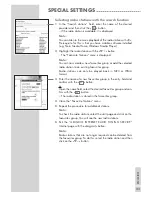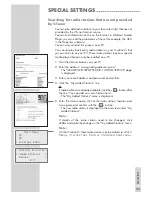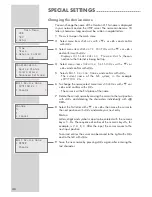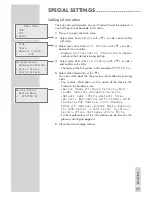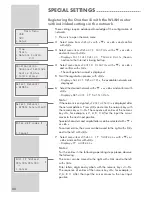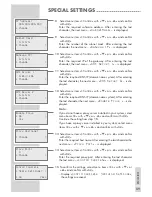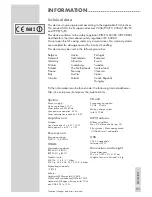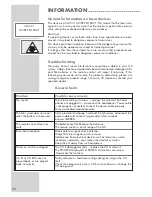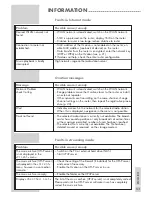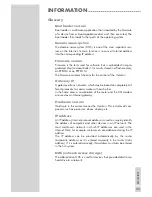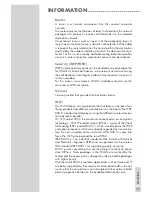
EN
GLISH
57
INFORMATION
------------------------------------------------------------------------------
Router
A router is a network component that links several computer
networks.
The router analyses (on the basis of layer 3 information) the network
packages of a protocol it receives and forwards it to the intended
destination network.
Conventional routers work on layer 3 of the application layer. A
router has an interface for every network connected to it. When data
is received, the router determines the correct path to the destination
and thereby the suitable interface via which the data can be trans-
ferred. For this it uses a locally available routing table that specifies
via which router connection a particular network can be reached.
Security (WEP/WPA)
WEP (wired equivalent privacy) is the standard encryption algorithm
for WLAN. It controls both access to the network as well as ensuring
the confidentiality and integrity of data. This procedure is seen as in-
secure nowadays.
For this reason, more modern WLAN installations tend to use the
more secure WPA encryption.
V-Tuner
Service provider that provides Internet radio stations.
Wi-Fi
The Wi-Fi Alliance is an organisation that has taken on the task of cer-
tifying products from different manufacturers on the basis of the IEEE-
802.11 standard and thereby ensuring that different wireless devices
can operate in parallel.
On 31 October 2002, the consortium announced a new encryption
technology – Wi-Fi Protected Access (WPA) – a part of the (then)
forthcoming IEEE standard 802.11i which would replace the WEP
encryption procedure which was already regarded as insecure be-
fore the new standard came into force. After 802.11i came into
force, the Wi-Fi group coined the term WPA2.
IEEE 802.11e is an industrial standard of the Institute of Electrical
and Electronics Engineers (IEEE) and a supplement to the wireless
LAN standard IEEE 802.11 for supporting quality of service.
802.11e works according to a similar principle to the QoS proce-
dure DiffServ. Data packages in the WLAN are marked by the
sender and the access point is stopped in order to handle packages
with higher priority.
With the aid of 802.11e real-time applications such as Voice over IP
are better supported as they require a certain bandwidth in the net-
work so that the connection is not interrupted if other network traffic
places too great a burden on the available data transfer rate.

